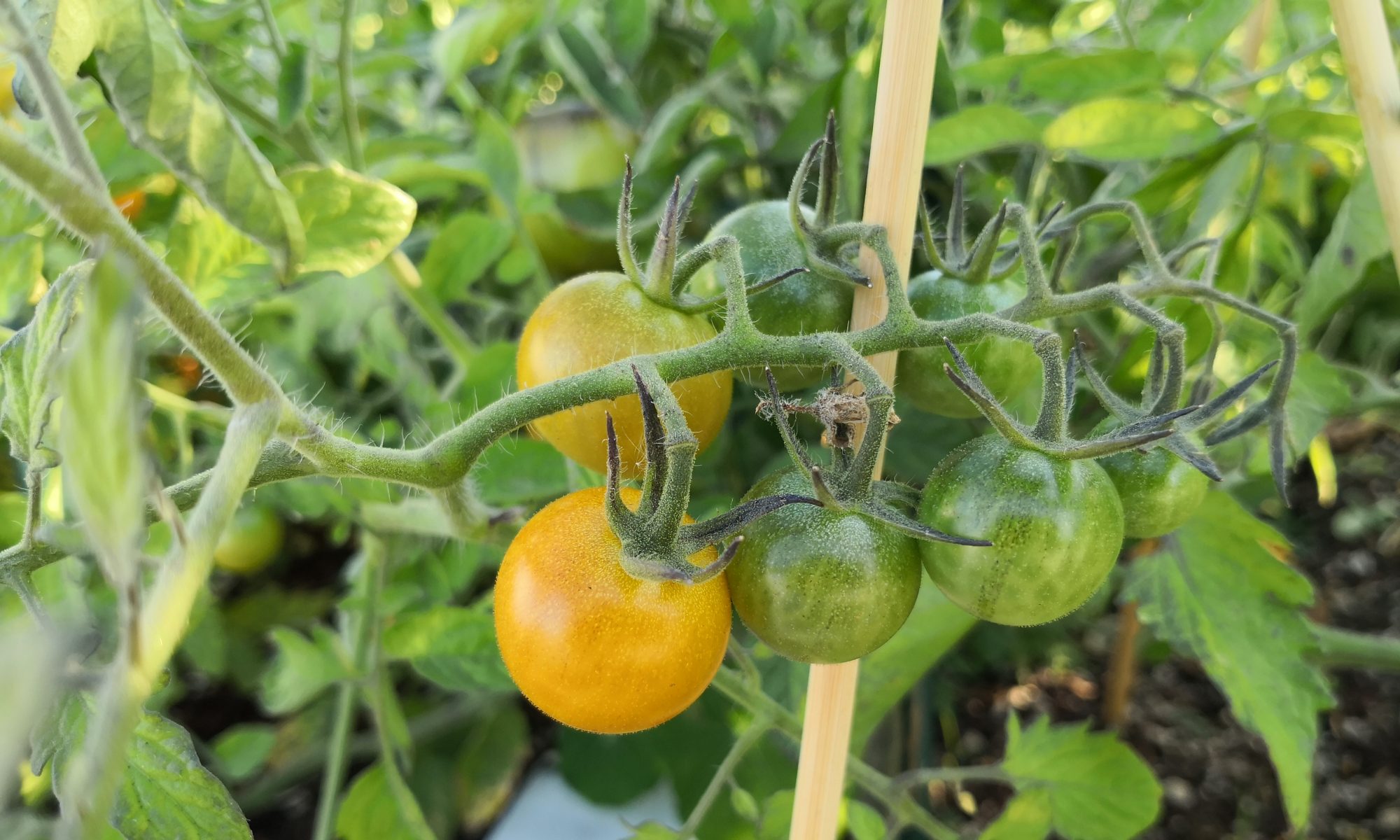Links to burlap and weed barrier fabrics – US
Links to burlap and weed barrier fabrics – Canada
One topic I wasn’t prepared for during year one was the increased impact of wind on the garden. Ground-level gardens benefit from natural barriers in the form of trees, buildings, hedges and the like. On the roof, most of these aren’t present, and in our case winds from the west are uninterrupted as far as the eye can see. The implications?
- Risk of toppling for any non-woody plants.
- Lower ambient and soil temperatures due to the cooling effects of wind.
- Arrival of foreign seeds from who-knows-where.
Risk of toppling non-woody plants. This issue became clear almost immediately as after transferring seedlings to the outdoor beds. Despite having staked them, the first windy day saw them lashed about their stakes to the point of death. Over time I’ve come to realize the obvious danger to young plants, but that this extends also to larger plants later in the year as well. A number of large tomatillo plants found themselves significantly damaged as a late summer wind caught the row and toppled those poorly staked, and even snapped some of the stakes themselves.
We’re still testing, however we’ve found the following to work:
- Choose locations with wind & temperature consideration in mind when planning your garden. For example, our pepper plants are now bordered by a protective glass barrier (conveniently already present on the roof) which both limits wind exposure and allows light through to heat the soil.
- Stake all plants, large and small. We used bamboo of various lengths and diameters, affixed with twist ties which required adjustment as the plants matured in order to avoid impairing growth. Note that we affixed both stems, and branches where necessary, and revised placement of supports through the season to provide adequate support and protection.
- Protect the most exposed areas with additional barriers. For some beds the exposure was just too great for anything other than strawberries, or low herbs like thyme, or woody plants. Here we affixed supports to the beds themselves and used strips of burlap to break the wind. This worked well to block the wind, however I think it was too effective and may have lead to powdery mildew on some plants as they dried more slowly after rain, and there was limited circulation. This burlap on Amazon (here’s a link in you’re in Canada) comes in narrower sheets which should allow introduction of gaps which should help with circulation.
Lower ambient, and soil temperatures. This one’s pretty straightforward, but cool wind will cool plants, so constant wind will bring down the temperature around the plants, and of the soil itself. My guess is that this will be more of an issue for plants like peppers, but I could be wrong. This year I’ll be trying black plastic sheeting (link for those in Canada) on the soil prior to seeding, and then retaining it around the plants to raise temperature for those plants that need it.
Arrival of foreign seeds. This one I hadn’t considered, but it quickly became evident. Each spring we see the evidence as weeds of all types start to sprout in our planters, and each year we see new varieties showing up. Some of these may arrive with birds (a particularly irritating example being climbing nightshade which has taken root in the far corner of a non-cultivated, and hard-to-access planter… right at the precarious edge of the roof), but I’m completely convinced that many are brought on the wind and deposited randomly.
These challenges aside, I do think the plants benefit from the additional circulation afforded on the roof, especially given I tend to plant more densely than recommended given the limited square footage.
Good luck!
